Early Bloomers In The Garden: Winter Gives Way to Colors of Spring
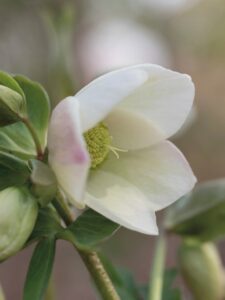 During midwinter days, it seems the season will never lose its icy grip. Warm sunshine, buzzing bees and pretty flowers may feel like they are ages away, but believe it or not, now is the time to start thinking about your spring landscaping. To inspire you and carry you through, take a peek at these early spring bloomers—the surest sign that warmer weather is coming. If they aren’t already, soon these flowers will be sprouting their way out of the cold, hard ground to give us all the colorful revival we have been anxiously awaiting. Make note of those that catch your eye, and plan to plant some yourself when your garden is ready!
During midwinter days, it seems the season will never lose its icy grip. Warm sunshine, buzzing bees and pretty flowers may feel like they are ages away, but believe it or not, now is the time to start thinking about your spring landscaping. To inspire you and carry you through, take a peek at these early spring bloomers—the surest sign that warmer weather is coming. If they aren’t already, soon these flowers will be sprouting their way out of the cold, hard ground to give us all the colorful revival we have been anxiously awaiting. Make note of those that catch your eye, and plan to plant some yourself when your garden is ready!
Lenten Rose
A low-maintenance evergreen, the Lenten rose is actually not a rose at all, but part of the buttercup family. This late-winter/early-spring bloomer is so named because it usually blooms during the season of Lent and features various rosy colors. Its flower petals, which can range from pure white to a deep plum, hang downward like those of a buttercup. Mature plants can reach heights of 18 to 24 inches, growing in clumps that spread to widths of two to three feet. Once they reach about eight years old, you can expect as many as 100 or more flowers per plant. The Lenten rose is great for beginners; it’s sturdy, drought tolerant, and resistant to deer and voles. The leaves contain bitter-tasting alkaloids, an unpleasant encounter for woodland creatures. While this pest-resistant evergreen plant thrives in shady areas with little maintenance, keep in mind it is slow growing (it takes about four years to mature before it will flower for the first time), so be patient. These beauties will be worth the wait!
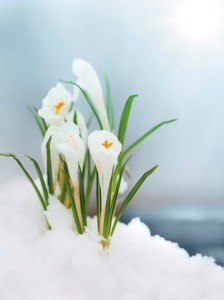 Crocus
Crocus
Crocuses are one of the earliest flowers to bloom, announcing the imminent departure of winter with lovely pink, purple, yellow or white petals. If you haven’t planted this perennial, you are missing out on an early season of delight. From snow crocuses (the first to bloom) to giant Dutch crocuses, these blooms stand out against the bleak late-winter landscape. Many even have strong perfumes that lure bees out of their hives in February or March. Small bulbs like crocus not only provide winter garden color, but they naturalize, meaning they spread on their own and come back year after year—with minimum care—for an ever-larger display. As a bonus, deer, squirrels and rabbits rarely bother these early little bulbs. It’s best to plant crocuses before the ground freezes in the fall. They can be planted almost anywhere, but thrive best in full sun and well-drained soil.
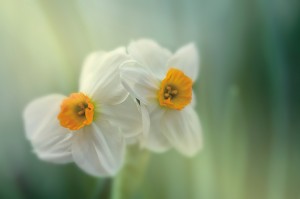 Daffodils
Daffodils
If easy but showy is what you’re after, daffodils are the way to go. Increasing naturally from year to year, these gorgeous flowers are long-lived, stand up to cold and heat alike, and require virtually no attention after minimal care at the planting stage. They don’t even require summer watering (although they’ll surely accept it). Flowering commences in late winter and early spring, but planting should be done as soon as they are available in the fall. These perennials love to face the sun, and come in yellow, white, orange, pink and even red. Daffodils are suitable for planting between shrubs, in a border or even under high-branching trees. They also look stunning in a woodland garden and in large groves; many gardeners even plant these bulbs by the hundreds. Most types reach 1 to 1-1/2 feet tall and make fine cut flowers. Keep them in a vase of their own, though, since their freshly cut stems release a substance that causes other flower types to wilt. Did you know that these trumpet-shaped flowers symbolize friendship?
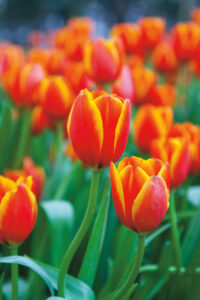 Tulips
Tulips
One of the most popular spring flowers of all time, and the third most popular worldwide, the tulip is a tried and true favorite amongst the perennials. In fact, there are now over 3,000 different registered varieties of cultivated tulips. Tulip bulbs come in virtually every color under the sun, including a purple so deep that it almost looks black, and are especially fragrant. These sunshine-lovers are excellent in beds and borders, and their stems are great for cutting to use indoors as well. It is best to plant tulip bulbs in the late fall, six to eight weeks before a hard frost is expected and when the soil temperature is below 60 degrees. Water tulips during dry spells only; otherwise, do not water. Tulips prefer to stay dry.
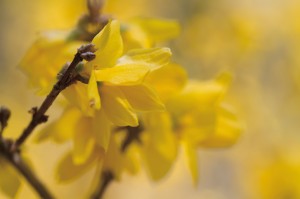 Forsythia
Forsythia
What better way to announce the return of spring than with sunny splashes of bright, yellow forsythia? These showy shrubs are among nature’s earliest spring bloomers. A member of the olive family, this shrub features slightly bell-shaped blooms that range in color from soft butter yellow to bright, vivid gold. They are extremely fast growing, which means pruning often is a necessity. Other than pruning, these bushes are easy to grow and established plants require little care. They grow best in full sun to partial shade, and should be fertilized once a year in early spring. Use a high phosphorous fertilizer to promote bright blooms. Forsythia can be used in a variety of ways. They can be placed singly in the yard, left to grow naturally (no upkeep required), or grown as a hedgerow, along foundations in a neat and orderly fashion. Flowers form on the prior year’s growth, not new growth, so it is important to prune them immediately after the flowers have bloomed. But it’s okay to be aggressive when pruning—they will grow back quickly. If you want to bring some of this deciduous shrub indoors, cut a few branches in late winter to bring into the house. In a week or two, you will be treated to an early dazzling flower bouquet.
With these early-blooming flowers planted around your home, heavy winter spirits are sure to be lifted. As these colorful blooms emerge, we are reminded that spring is on its way.
crocus, Early Bloomers, Forsythia, Lenten Rose, Spring Bulbs, Spring Color, Tulips






